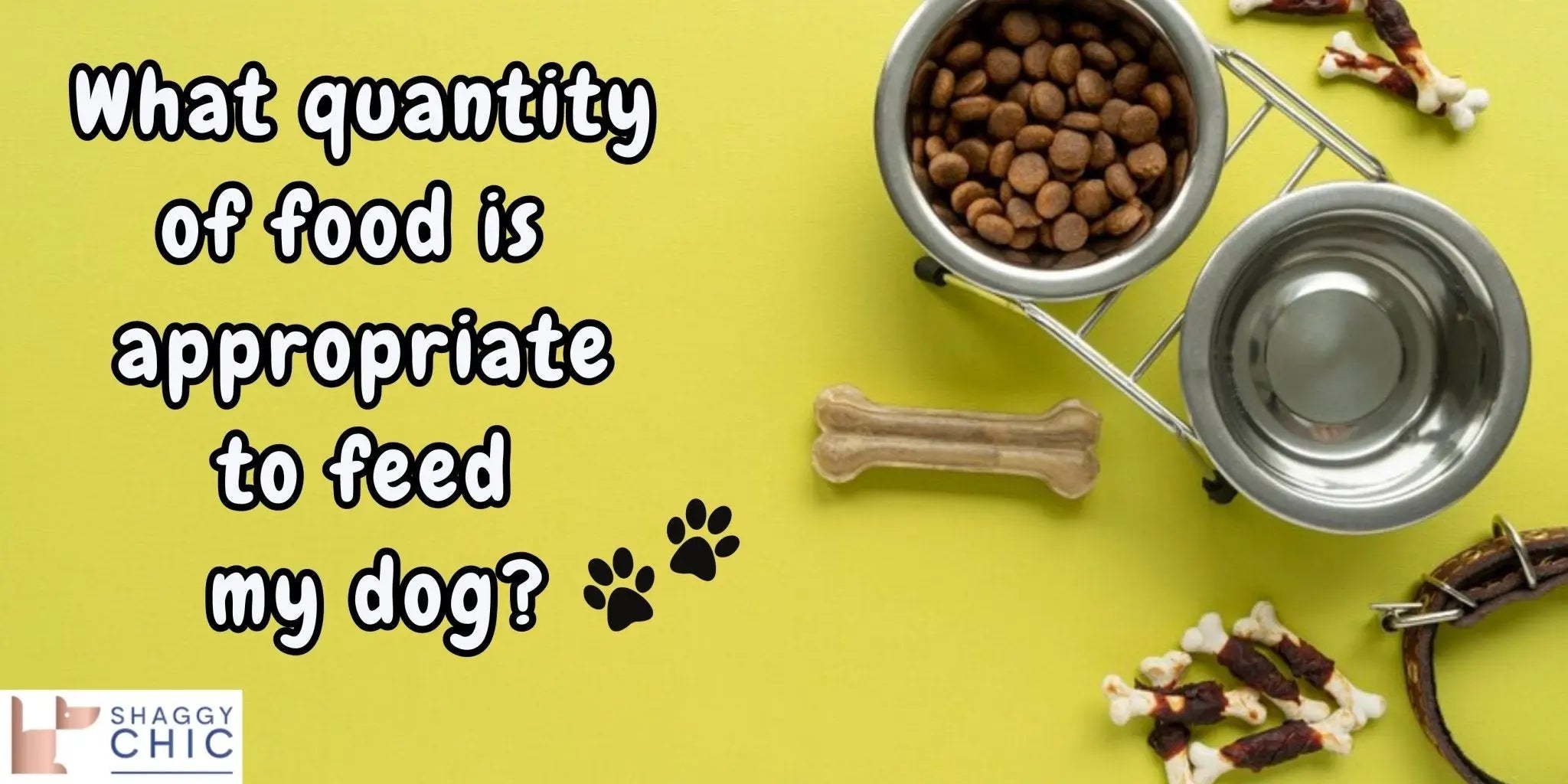
What quantity of food
What quantity of food is appropriate to feed my dog?
If you inquire with your dog, mealtime occurs whenever you step into the kitchen. Similar to us, dogs don't solely eat when hungry—being natural scavengers, they're prepared to eat whenever food is present. Amidst those pleading eyes and seemingly endless appetite, distinguishing between genuine hunger and mere begging can be challenging.
Getting the right amount is slightly more nuanced than reading a food label. How much food your dog needs depends on several important factors such as:
- type of food
- your dog’s breed
- activity level
- body weight
- number of meals
Go through the leading Pet Supplies collections now a days.

How Much Food Does My Dog Need?
The amount of food a dog needs varies widely depending on the individual, so there’s no one-size fits all answer here. The factors to take into account for your dog include:
- Age – Puppies need more food than adult dogs, as they are growing and developing. They should be fed puppy food in several small meals spread throughout the day. A senior dog (dogs 7 to 12 years and up) may burn less energy and put on weight more easily. However, they may also absorb nutrients more poorly, so they should be given food especially formulated for seniors.
- Weight – After age, the next factor to consider is your dog’s weight. Oftentimes, your pup’s food packaging will include a feeding chart with weight ranges and recommended food amounts. However, if your dog is overweight or obese, their food intake may need to be reduced slightly until they lose weight. You can consult your veterinarian for guidance or the Association for Pet Obesity Prevention, which provides a chart of approximate daily caloric needs for average indoor pets.
- Activity level – Although your dog’s weight will give you a rough estimate of how much food they need, your dog’s calorie needs also depend on activity level. If your dog is the one running laps around the dog park and playing fetch until your throwing arm wears out, use the high end of the feeding range for their weight. On the other hand, if you’ve got a couch pup-tato, opt for the low end of the range.
- Health conditions – Your dog’s health can also affect how much food they need. Dogs with health conditions such as diabetes or kidney disease may need special prescription diets. Pregnant dogs or nursing dogs also have special needs for extra calories and nutrients.
If you are looking for the best-selling pet health supplies. Check out the best online store in USA called Shaggy Chic.

How to Read Dog Feeding Charts
Dog food charts vary in their cup recommendations for your dog, but interpreting the tables is generally straightforward. To ascertain the appropriate amount of food for your dog, consult the weight they should ideally be and divide the portions accordingly based on their daily meals. A useful tip is to pre-measure the food into a separate container each morning to avoid guesswork about their consumption.
For an example of what a feeding chart could resemble, here's a sample based on a standard dry food for adult dogs:
|
Dog’s Weight |
Food Per Day |
|
3-12 pounds |
½ – 1¼ Cups |
|
13-20 pounds |
1⅓ – 1¾ Cups |
|
21-35 pounds |
1¾ – 2½ Cups |
|
36-50 pounds |
2½ – 3¼ Cups |
|
51-75 pounds |
3¼ – 4¼ Cups |
|
76-100 pounds |
4¼ – 5½ Cups |
|
Over 100 pounds |
5¼ + ⅓ cup for each additional 10 lbs. |
The chart will provide a suggested daily feeding amount based on your dog’s weight category. Here's what you can do with that information:
- Divide it up – The recommended caloric amount usually represents the total for the day, so you'll need to divide that figure by the number of meals you're providing your pup each day.
- Start low and work up – Most feeding charts recommend a serving size of ½ to 1 cup per day. Use your dog’s activity level to determine whether to opt for the lower or higher amount for their weight. Since it's easier to put weight on than take it off, it's advisable to start at the lower end and adjust as necessary.
- Understand that every brand differs – Whenever you switch brands, make sure to refer to the new feeding chart to ensure you're still offering your dog the appropriate amount of food.
Read More ↓
The Benefits of Organic and Natural Pet Supplies
FAQS
- How often should I feed my dog?
Most dogs do well with two meals a day, but consult your vet for specific recommendations.
- Can I give my dog treats
Yes, in moderation. Choose healthy options and consider their calorie intake.
- What if my dog is overweight or underweight?
Adjust their food portions and consult your vet for advice.
- Can I switch my dog's food?
Yes, gradually over about a week to avoid stomach upset.



